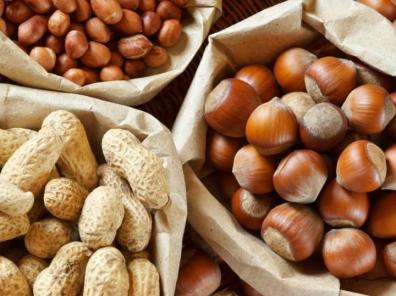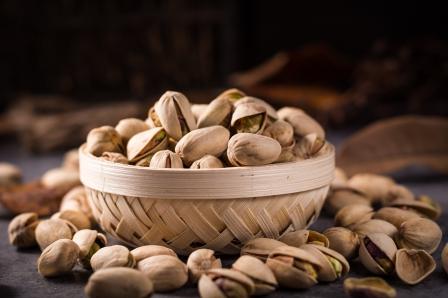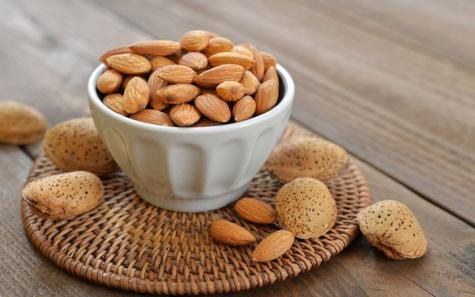In the land down under, where kangaroos roam and beaches stretch for miles, there lies a hidden gem that is not commonly associated with Australia – the big peanut. While peanuts are often associated with other countries like the United States, Australia also boasts a rich history and vibrant industry centered around this versatile legume. Join us on a nutty journey through the history, agriculture, and culinary delights of the big peanut in Australia. History of Peanuts in Australia: Peanuts were first introduced to Australia in the 19th century by Chinese immigrants who brought them over as a source of food and oil. However, it wasn’t until the early 20th century that peanuts started to gain popularity among Australian farmers. The warm climate of regions like Queensland and New South Wales proved to be ideal for peanut cultivation, leading to a boom in peanut production in the country. One of the key milestones in the history of peanuts in Australia was the development of improved peanut varieties by agronomists and researchers. These new varieties were more disease-resistant, higher-yielding, and better suited to the Australian climate, leading to a significant increase in peanut production across the country. Today, Australia is one of the top producers of peanuts in the world, with Queensland leading the way in peanut cultivation. Agriculture of Peanuts in Australia: Peanuts are primarily grown in the northern regions of Australia, where the warm climate and sandy soils provide optimal growing conditions for this legume. Queensland, in particular, is known for its peanut production, with the majority of Australian peanuts coming from this region.
.
The peanut planting season typically begins in spring, with harvesting taking place in autumn. Peanuts are a relatively low-maintenance crop, requiring minimal water and fertilizers compared to other crops. They also play a crucial role in crop rotation systems, helping to improve soil quality and reduce pest pressure for other crops. Australian farmers have adopted sustainable agricultural practices to ensure the long-term viability of their peanut crops, including minimal tillage, integrated pest management, and water-efficient irrigation techniques. Australia’s peanut industry is not just focused on peanut production for domestic consumption; it also plays a significant role in the global market. Australian peanuts are exported to countries around the world, contributing to the country’s agricultural exports and economy. The high quality and safety standards of Australian peanuts make them highly sought after in international markets, further boosting the reputation of Australian peanuts on the global stage. Culinary Delights of Australian Peanuts: Peanuts are not just a popular agricultural crop in Australia; they are also a beloved ingredient in the country’s culinary scene. From peanut butter and snacks to desserts and main dishes, peanuts are a versatile ingredient that adds flavor and texture to a wide range of dishes. Australian chefs and home cooks alike have found creative ways to incorporate peanuts into their recipes, showcasing the diversity and potential of this humble legume. One of the most iconic Australian peanut products is peanut butter, a creamy spread made from roasted peanuts that is enjoyed by people of all ages. Australian peanut butter is known for its rich, nutty flavor and creamy texture, making it a staple in pantries across the country. Peanuts are also commonly used in savory dishes like stir-fries, curries, and salads, adding a crunchy element and nutty flavor to these dishes. In addition to savory dishes, peanuts are also a popular ingredient in desserts and sweets.
..
Peanut brittle, a crunchy confection made from caramelized sugar and peanuts, is a favorite treat during the holidays and special occasions. Peanuts are also used in cookies, cakes, and ice cream, adding a nutty twist to traditional desserts. Australian chefs continue to experiment with peanuts in their culinary creations, pushing the boundaries of flavor and creativity in the kitchen. Conclusion: The big peanut in Australia may not be as widely recognized as other agricultural crops, but its impact on the country’s history, agriculture, and culinary scene is undeniable. From humble beginnings as a Chinese import to a thriving industry that contributes to the global market, peanuts have come a long way in Australia. With a rich history, sustainable agricultural practices, and a place in the hearts of Australian food lovers, the big peanut continues to be a star player in the land down under. So, the next time you enjoy a spoonful of creamy peanut butter or crunch into a peanut-studded dessert, remember the journey of the big peanut in Australia and savor every nutty bite. Australia’s peanut industry is not without its challenges, however. Like many agricultural sectors, peanut farming faces risks from factors such as climate variability, pests, and market fluctuations. Climate change poses a significant threat to peanut production, with rising temperatures and changing rainfall patterns impacting crop yields and quality. Farmers are continuously adapting to these challenges by implementing climate-smart agriculture practices and investing in research and development to develop more resilient peanut varieties. Pest management is another crucial aspect of peanut cultivation in Australia.
…
Pests such as nematodes, mites, and pod borers can cause significant damage to peanut crops if left unchecked. Integrated pest management strategies, which combine biological, cultural, and chemical control methods, are essential for controlling pest populations while minimizing environmental impacts. Farmers work closely with agronomists and researchers to monitor pest populations, implement timely interventions, and reduce the reliance on chemical pesticides. In addition to climate and pest challenges, market dynamics also play a role in shaping the future of the Australian peanut industry. Fluctuations in global demand, trade policies, and consumer preferences can impact peanut prices and market access for Australian producers. To remain competitive in the global market, Australian peanut farmers must stay informed about market trends, maintain high-quality standards, and explore new market opportunities for their products. Despite these challenges, the future looks promising for the big peanut in Australia. Continued investment in research and innovation, sustainable agricultural practices, and value-adding opportunities will help secure the long-term success of the Australian peanut industry. Consumers are increasingly interested in supporting local, sustainable, and high-quality food products, which bodes well for Australian peanuts and peanut products in the market. As awareness of the health benefits and versatility of peanuts grows, demand for Australian peanuts is expected to increase both domestically and internationally. Peanuts are a good source of protein, fiber, vitamins, and minerals, making them a nutritious addition to a balanced diet. With the rise of plant-based diets and a focus on sustainable food choices, peanuts are likely to become a more prominent feature in the culinary landscape of Australia and beyond.




Your comment submitted.